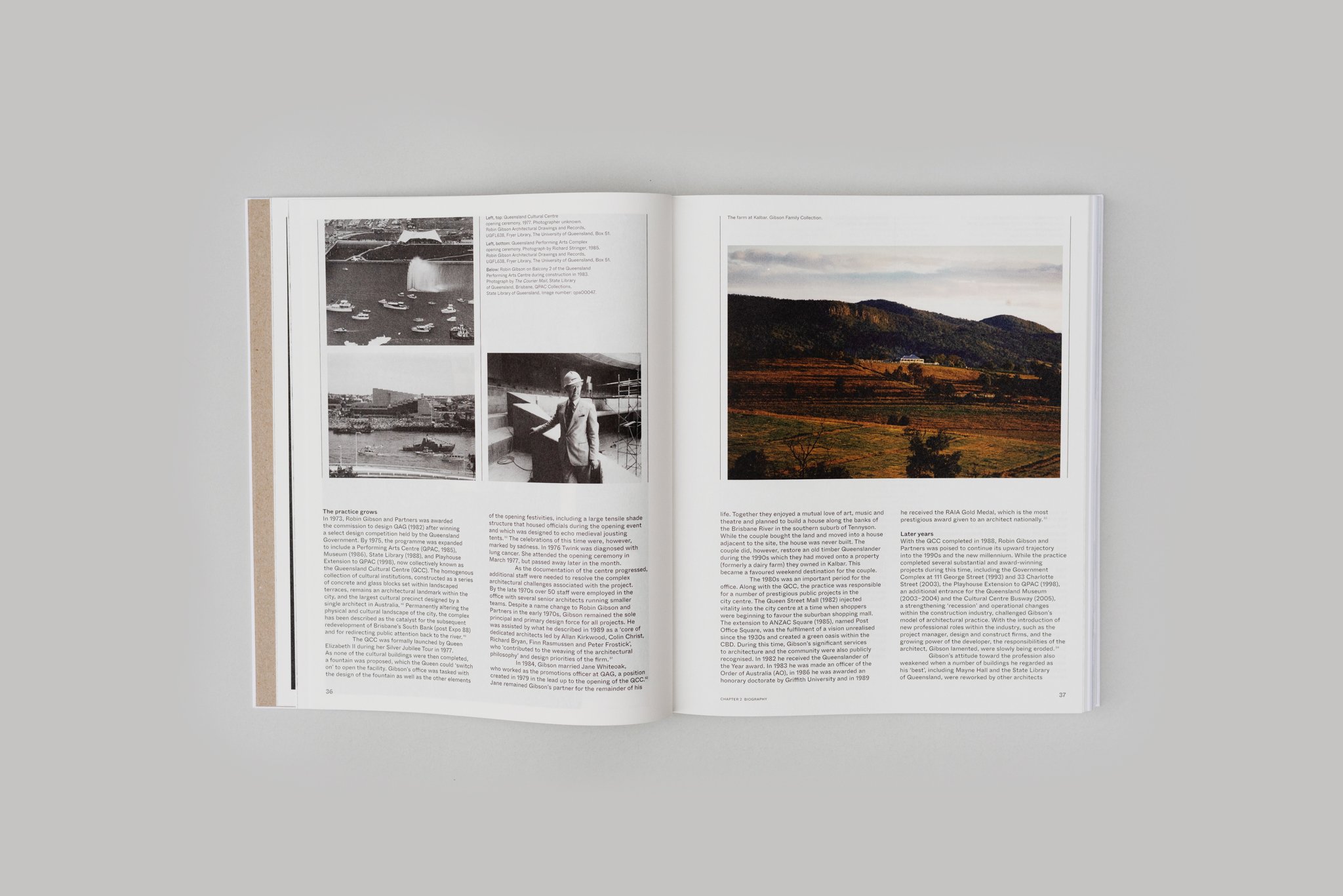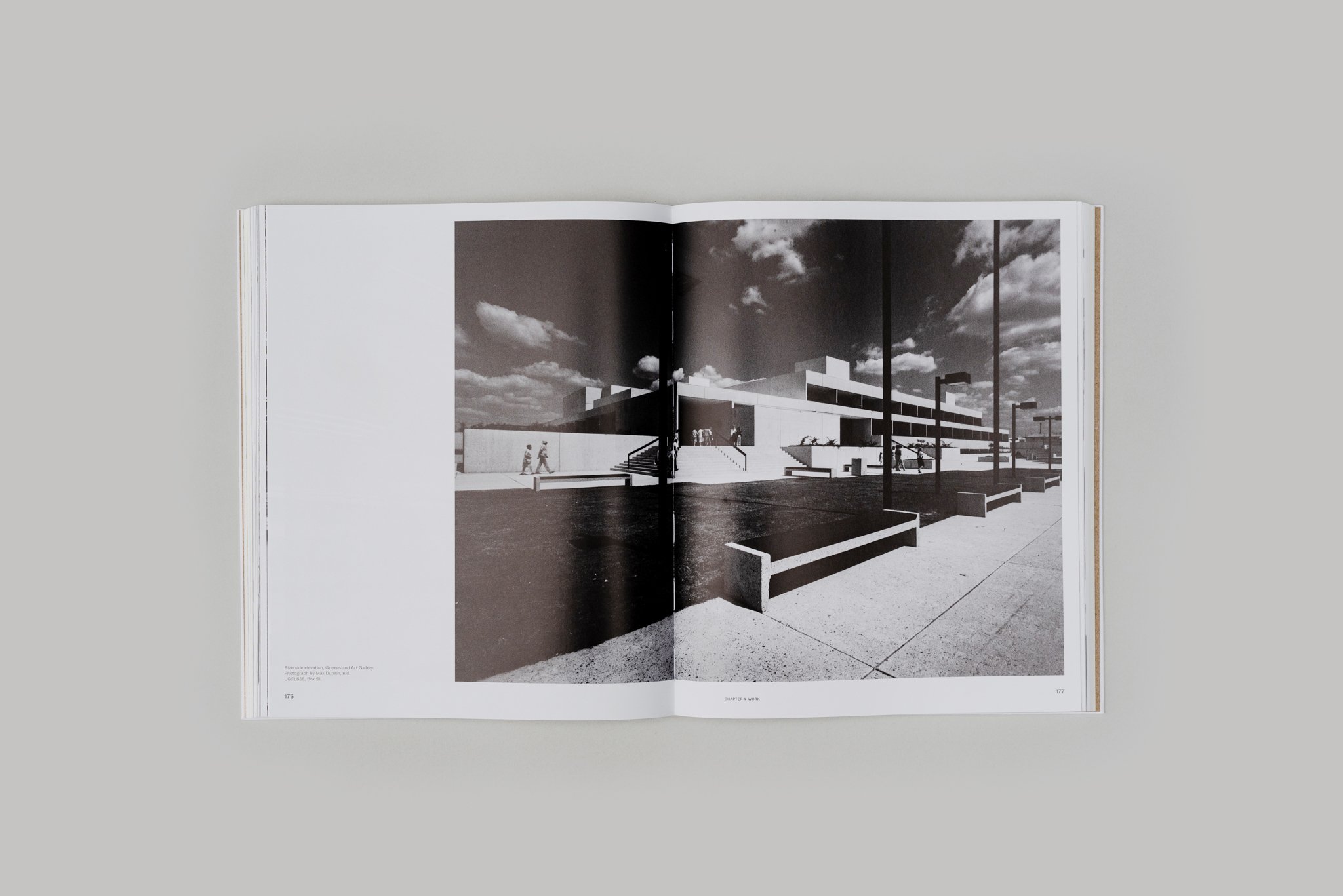Light, Space, Place:
The Architecture of Robin Gibson
by Deborah van der Plaat, Lloyd Jones (eds).
Designed with Toko.
Published in 2022.
Format
Hardback, 344pp, 286x234mm
ISBN
9780648685838
While many architects aspire to profoundly transform their cities, very few ever manage to build at a scale that might make this possible. Architect Robin Gibson not only built prolifically and at expansive urban scales, his projects also helped to redefine the culture and identity of one of Australia’s major capital cities.
Born in Brisbane in 1930, Gibson graduated from the University of Queensland in 1954. He spent a brief period working as an architect overseas before returning to his home city in 1957. Here, he established an architectural practice that would go on to design some of Brisbane’s most important civic and commercial environments, including a cluster of what are arguably the most transformative projects ever built in the city: the Queensland Museum, the State Library of Queensland, the Performing Arts Complex and the renowned Queensland Art Gallery.
Though he rarely wrote or published on his own architecture, Gibson had an outsized presence in his home city (at one point being named Queenslander of the Year) and he was awarded the Australian Institute of Architects Gold Medal, the institute’s highest honour. His output, however, has been subject to surprisingly little criticism in either mainstream or professional publications. Furthermore, much of this criticism gives us an imperfect understanding of the thinking behind Gibson’s architecture.
While commentators have attempted to situate Gibson within the conventional folds of international modernism, or even brutalism, this book reveals that his body of work, while carrying many of the formal trappings of high modernism, was actually underpinned by a distinctive vision of Brisbane as a subtropical city, sensitive to climate and place, and alive with people.
Dr Deborah van der Plaat is an Honorary Senior Research Fellow in the School of Architecture at the University of Queensland (UQ). From 2015-2019 she was the manager of ATCH (Architecture Theory Criticism and History) at UQ and has co-managed the Digital Archive of Queensland Architecture since 2014. Her research examines the architecture of 19th and 20th-century Australia and its intersection with theories of climate, place, migration and race. Writing histories of Queensland architecture is also a focus within her work.
Lloyd Jones is currently undertaking a PhD on Robin Gibson under the supervision of Dr Deborah van der Plaat and Dr Janina Gosseye. His research aims to document the work of eminent Queensland architect Robin Gibson (1930-2014) and his practice, Robin Gibson and Partners (c.1958-2013). He holds a Bachelor and a Masters degree in architecture from the University of Queensland’s School of Architecture. Jones has been involved with projects documenting Queensland’s post-war architectural history having previously worked on the Hot Modernism exhibition and for the Digital Archive of Queensland Architecture as a MArch student. In 2018, Jones received the Young Achievement Award at the National Trust (Queensland) Heritage Awards, and the Guilford Bell Travel Scholarship from the School of Architecture at the University of Queensland.
About the editors
Recognition
“… a welcome addition to the growing collection of monographs on significant Australian architects… a sumptuously designed tome, rich with illustrations…”
–Andrew Murray, Fabrications: The Journal of the Society of Architectural Historians, Australia and New Zealand







